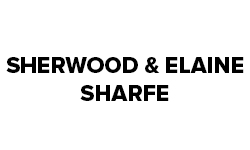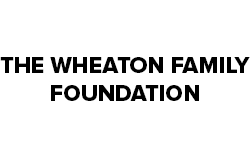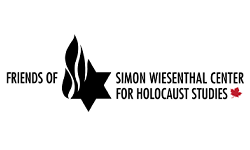Part B Learning Plan – 10 History, Native Studies, Social Studies
Inquiries are identified and connections to Big Ideas are noted. Teachers may start with any inquiry or combine inquiries to use the approach that resonates best with their students.
Suggested inquiries may be studied in any order according to student interests.
Why are some voices honoured, while others are silenced?
- How do worldviews inform and influence issues of conflict?
- What happens when worldviews contradict one another?
- How are diverse viewpoints accommodated?
Where does inequity come from?
- Is inequity the result of individual action or systemic injustice?
- What are the contributors and remedies to inequity?
Big Ideas Explored:
- Imperialist policies, practices and attitudes of the past have an impact on current society;
- Differences in levels of power can impact cultural, economic social, philosophical, and aesthetic issues.
- Conflict resolution strategies differ in their effectiveness and can have a residual impact. Such strategies include: assimilation, annihilation, and segregation.
- Diversity is exemplified differently in society and may create opportunities and inequities;
- Inequities are set up and maintained because of our systems; and,
- Historic foundations impact current Canadian issues.
Historical Thinking Connections
Historical Significance: How do we decide what is important to learn about the past?
Primary Source Evidence: How do we know what we know about the past?
Continuity and Change: How can we make sense of the complex flows of history?
Cause and Consequence: Why do events happen and what are their impacts?
Historical Perspectives: How can we better understand the people of the past?
Ethical Dimension: How can history help us to live in the present?
Questions to Guide Inquiry
Essential questions and guiding questions are posed to support teachers as they facilitate students’ exploration of the inquiry. Teachers are encouraged to adjust the wording, omit or add additional questions as needed.
Teachers may want to consider putting the questions into a “Before, During, After” chart to note the changes in students’ thinking as a result of the inquiries.
- What does it mean to be a citizen?
- Are all citizens treated equally?
- Are all worldviews respected?
- Why is there conflict between worldviews?
- Why is there conflict between some worldviews and cooperation/compatibility between others?
- How does conflict and cooperation impact the development of society?
- How are differences resolved? How is the group desire determined and represented?
- How can conflicting worldviews peacefully coexist?
- What are the social contracts that allow differing worldviews to co-exist?
- What have been the historic worldviews that have influenced our current social realities?
- What range of responses have citizens used throughout history to respond to conflicting worldviews? / How do engaged and respectful citizens respond to conflict in a modern democracy?
- How do different societies and cultures administer justice?
- How does this compare to historical applications of justice?
- What are the methods to resolve conflict?
- How do these responses compare to the way we, as Canadians perceive justice?
- What responsibility does an ethical and democratic society have to pursue justice?
- How do we evaluate the ethics and justice of a society?
- Why does conflict exist?
- How do engaged and respectful citizens and nations respond to conflict in a fair and just way?
- What are the impacts of Canada’s multi-cultural policy and affirmation of diversity?
- How has power been distributed in Canada?
- What is the relationship between power distribution and opportunity?
- How can inequities be addressed in current reality?
Surface and note additional student questions.
In inquiry, students are invited to determine the context and direction of the inquiry with teacher support in connecting to the enduring understandings or big ideas. Guided suggestions are provided to support educators new to the inquiry method. See also Further Investigation Suggestions in part C.
CONNECT TO TOPIC AND SURFACE STUDENTS’ THINKING ABOUT …
- Surface student thinking in response to the prompts or hook questions posed.
- Add questions from students; adjust the wording of questions as needed.
- Chart or record student thinking, perhaps in a ‘Before, During, After’ chart to note changes in student thinking.
Examining Conflict Resolution Practices
This part of the inquiry asks students to think about social justice issues and understand the historical and global practices to address differences or conflict. Canada’s record in addressing conflict is examined.
Inquiry
Why are some voices honoured, while others are silenced?
- How do worldviews inform and influence issues of conflict?
Hook Questions
- Why does injustice exist in the world?
- Where does inequity come from?
- Whose perspective do we use in defining and applying justice?
- What is Canada’s record in protecting justice and the rights of others?
- What happens when justice is not achieved?
- As citizens, how do we fix things/ right the wrongs?
Hook questions get students thinking about the issues in the inquiry and can also form the framework to guide student direction in exploration of the inquiry.
Brainstorm with students to identify some issues of conflict that are of current concern form them. What historical issues of inequity interest them?
Identify students’ understandings of conflict strategies that have been used throughout history. What were the social contracts that were guiding the beliefs, values and behaviours of individuals?
- Would there ever been times when it is best for individuals to conform?
- What is required for individuals to question and/or challenge beliefs and norms?
DEVELOPING UNDERSTANDING
- What themes are emerging?
- What are the similarities and differences?
- What are the connections to the enduring understandings?
The independence level of the class, will determine how much teacher direction is required to do this.
In this part of the inquiry students explore the results of a variety of conflict resolution strategies to understand the impacts of ideology, marginalization, and privilege on the process and the results.
Possible Topics of Exploration
- Treatment of Indigenous People in Canada
- Residential Schools,
- Métis struggle for Recognition and Rights,
- Indian Act
- Reserve System
- Evolution of Women’s Rights
- Political Ideology
- LGBT Rights
- Economic Exploitation
- Economic Inequality
- Economic Imperialism
- Free Trade
- Bullying
- Societal Power inequity
- Colonialism
- Imperialism
- National and International Codes of Human Rights
Have students identify questions they wish to explore with respect to the different ways that conflict has been and can be resolved. When students explore answers to similar questions from different perspectives and topics, then similarities and differences can be discovered and overarching themes identified.
Inquiry
Where does inequity come from?
- Is inequity the result of individual action or systemic injustice?
- What are the contributors and remedies to inequity?
- How do citizens fix wrongs?
- How are diverse viewpoints accommodated?
- What happens when worldviews contradict one another?
Time to Revisit and Reflect
Go back and reflect on the posted student answers on their ideas of justice and note how student thinking may have changed through the inquiry.
- What is the definition of justice and social justice?
- Whose perspective do we use in defining and applying justice?
- Can social justice exist?
- What responsibility do we have to resolve conflict?
- How do we resolve conflict? / What happens when conflict resolution practices break down?
- How do different societies and cultures administer justice?
- How does marginalization or privilege influence your perception of and pursuit of justice?
Go back to the injustices that you researched.
- What would have been needed to have a different resolution to the situation?
- What possible solutions can you devise?
- What role has stereotyping and historic practices played on the development of current systemic inequities?
- What is the process for changing prejudice and bias?
- How does Canada’s multi-cultural policy support this?
- What suggestions do you have for strengthening the policy?
- Has Canada succeeded in eliminating inequity? What suggestions do you have?
- Surfacing student thinking, posting, and then reflecting on thinking to note how thinking has changed and what has caused the changes.
- Jigsaw strategy approach: Students, individually or in groups, explore similar questions, present their findings to the group. The teacher helps students to note similarities, differences, themes. Students are encouraged to develop summary statements to clarify their thinking and describe new learning.
- Reflect on initial thinking to note how thinking has changed. What is the evidence to support the new learning?
APPLY AND EXTEND KNOWLEDGE
Choose and research one of the following areas
- UN Codes
- Charter of Rights and Freedoms
- religion
- morality
- law,
- politics
- culture
For your particular area identify the:
- connection or relationship to issues of justice
- influence on individual and societal views of justice
- impact of differences in perspective and worldview on our perception of justice
- influence on your pursuit of justice
- What inequities are set up because of our systems?
- What are the historic foundations that have supported these inequities?
- What is required to make changes to the current injustices created by the structures of Canadian society?
Have the students choose one of the various justice forums and propose a resolution:
- Court Trial
- Sentencing Circles
- Town Hall Meeting
- Mediation
- Truth and Reconciliation Commissions
- Human Rights Tribunals
EVIDENCE OF LEARNING
How has their thinking changed from their initial thinking?
What evidence do they have to support their thinking?
- What do you think now about…?
- What has caused your thinking to change?
- What evidence supports your thinking?
- Why is this information important to know?
- How will you use this information?
Inquiry
Why are some voices honoured, while others are silenced?
- How do worldviews inform and influence issues of conflict?
What happens when worldviews contradict one another?
- How are diverse viewpoints accommodated?
Where does inequity come from?
- Is inequity the result of individual action or systemic injustice?
- What are the contributors and remedies to inequity?
Essential Questions: Guiding Questions
- What does it mean to be a citizen?
- Are all citizens treated equally?
- Are all worldviews respected?
- Why is there conflict between worldviews?
- Why is there conflict between some worldviews and cooperation/compatibility between others?
- How does conflict and cooperation impact the development of society?
- How are differences resolved?
- How is the group desire determined and represented?
- How can conflicting worldviews peacefully coexist?
- What are the social contracts that allow differing worldviews to co-exist?
- What have been the historic worldviews that have influenced our current social realities?
- What range of responses have citizens used throughout history to respond to conflicting worldviews? / How do engaged and respectful citizens respond to conflict in a modern democracy?
- How do different societies and cultures administer justice?
- How does this compare to historical applications of justice?
- What are the methods to resolve conflict?
- How do these responses compare to the way we, as Canadians perceive justice?
- What responsibility does an ethical and democratic society have to pursue justice?
- How do we evaluate the ethics and justice of a society?
- Why does conflict exist?
- How do engaged and respectful citizens and nations respond to conflict in a fair and just way?
- What are the impacts of Canada’s multi-cultural policy and affirmation of diversity?
- How has power been distributed in Canada?
- What is the relationship between power distribution and opportunity?
- How can inequities be addressed in current reality?
- Injustices of today have roots in the past.
- Canadian society is challenged to manage the co-existence of diverse worldviews.
- Canadian citizens work to achieve a balance between rights and responsibilities through learning and action.
- Canadian society has inequities and elimination of these is beneficial for all Canadians.
- For each individual, becoming aware of racism in Canadian society is an evolutionary process and a precursor to change.
- As citizens of local, national, and global communities, Canadians are conscious, self-reflective, and critical of their own beliefs and actions and seek to make positive change.
- Citizens show flexibility of mind.
STUDENT CITIZENSHIP JOURNAL OPPORTUNITIES
Students are keeping a Citizenship Journal to reflect upon their developing views of citizenship. This section provides prompts for student journals. Students are invited to choose one that interests them or propose their own. Students can also respond to any of the essential questions.
Students are encouraged to respond using a variety of genres.
- What examples do you have when opportunities for some created inequity for others? Why do you suppose that happened? What do you think now about the situation?
- When did you feel pressure to choose a different response to an issue even though you felt it was wrong? How did you resolve your internal conflict?
© 2024 Concentus Citizenship Education Foundation Inc. All Rights Reserved.










